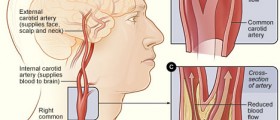
Serious head injuries can lead to acute subdural hematoma. This is an extremely dangerous form of head injury. Internal bleeding quickly fills the brain area and compresses the brain tissue, which can lead to brain injury and death. Even minor head injuries can result in subdural hematoma. This type of injury can develop and worsen over time. This is known as chronic subdural hematoma.
Symptoms
There are many different types of symptom of subdural hematoma. For example, one might experience confused speech, headache, lethargy, general confusion and loss of consciousness. Other symptoms might also manifest, such as nausea, vomiting, numbness and slurred speech. Occasionally, subdural hematoma might be indicated by seizures, visual disturbances or physical weakness. As for infants, some indications of subdural hematoma include focal seizures, high pitched cry, irritability, persistent vomiting and feeding difficulties. Infants might also display bulging fontanelles, increased head circumference, increased sleepiness and separated sutures.
Causes
In some cases, subdural hematoma can occur without any obvious cause. In this eventuality, the cause is likely to be rooted in the use of anticoagulant medication or alcohol abuse. Recurrent falls, repeated head injury and extremes of age are all potential triggers of subdural hematoma.Treatment
Prior to treatment, it will normally be necessary to undergo a CT or MRI scan in order to precisely evaluate the extent of the injury. Treatment should be urgently sought as subdural hematoma is considered to be an emergency condition.
In some cases, surgery might be required. Large blood clots or hematoma might require a craniotomy, which involves the creation of a large opening in the skull. In order to reduce pressure on the brain, a small hole will usually be drilled in the skull in order to drain out the fluid inside.
Some medications can be used in this situation. Diuretics and corticosteroids can be useful with regard to subdural hematoma, while anticonvulsion medications can be used in order to manage or prevent the occurrence of seizures. Of course, the administration of medication will depend on the makeup and seriousness of the hematoma.
The outlook for recovery will depend on the seriousness and location of the injury, as well as the efficiency of treatment. This injury does have a high death rate, and in general, a period of rehabilitation is required in order for the patient to return to normal levels of function. Recovery might also be hindered by brain herniation, persistent symptoms or recurrent seizures.

















Your thoughts on this
Loading...